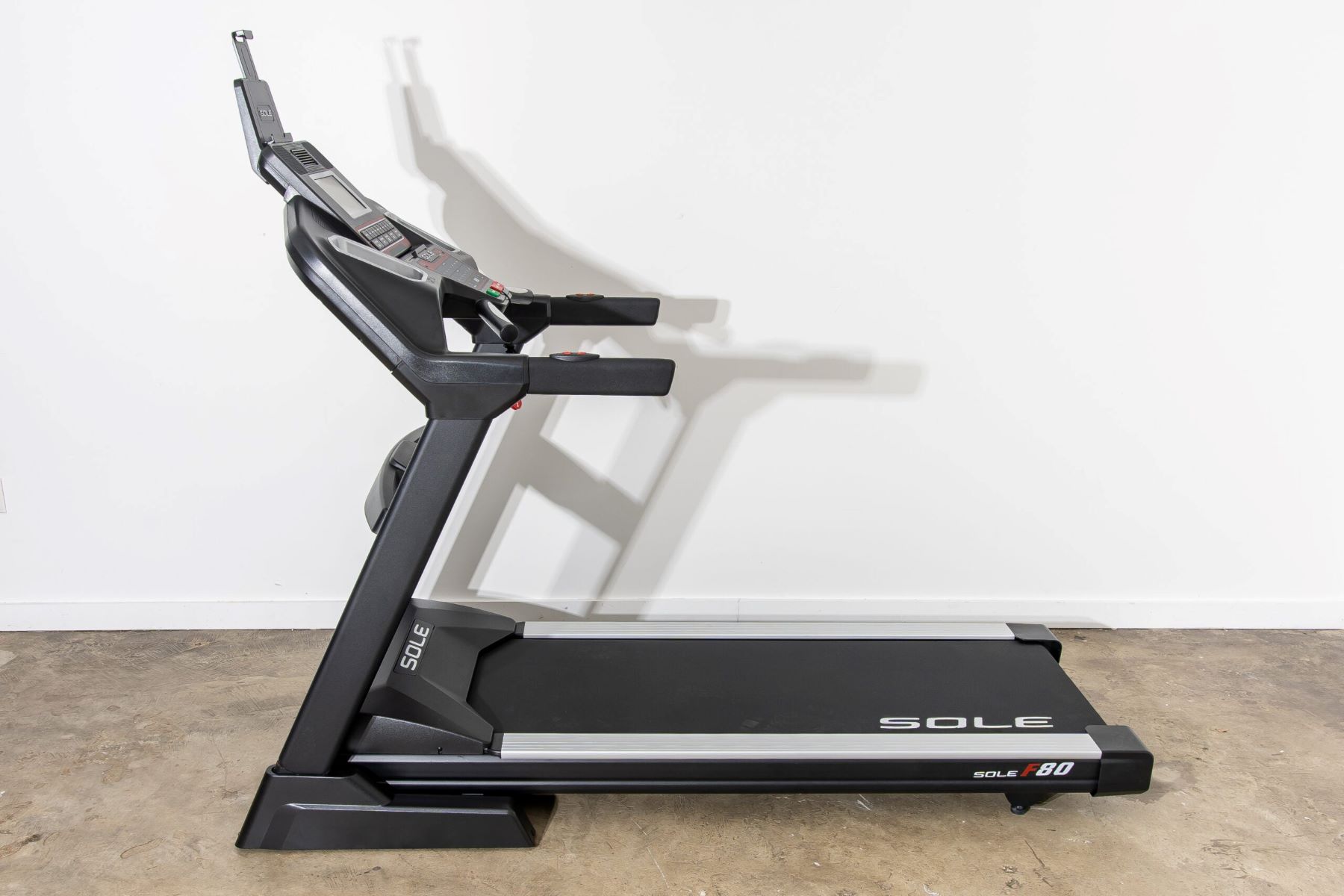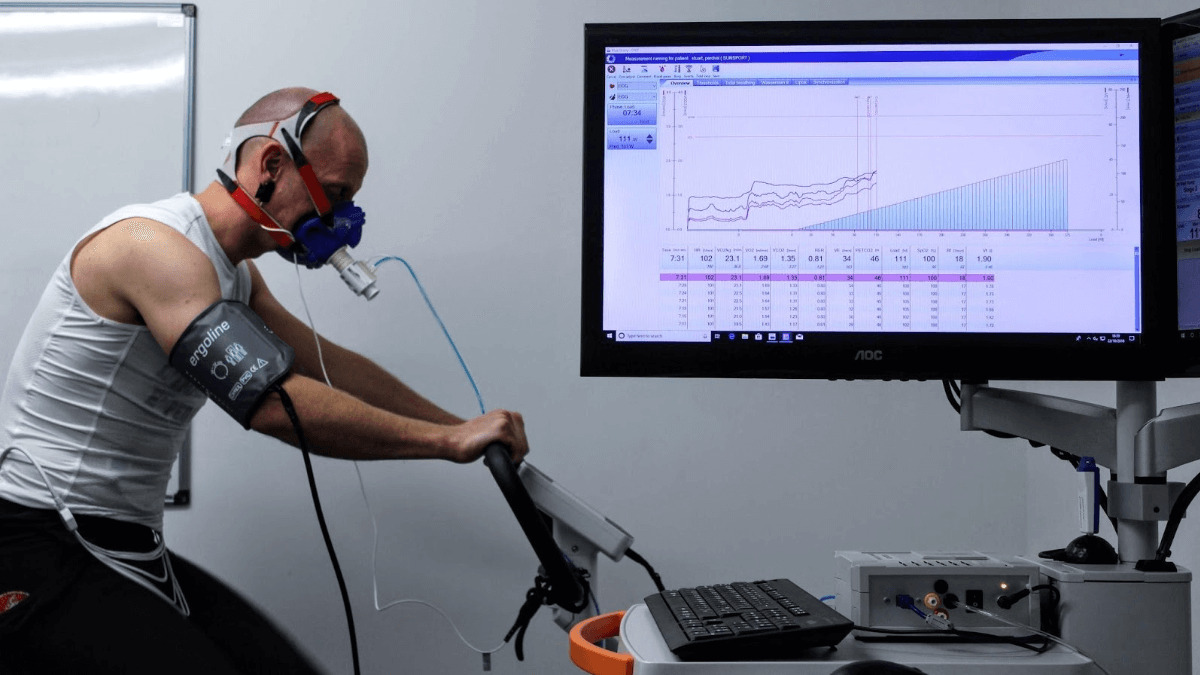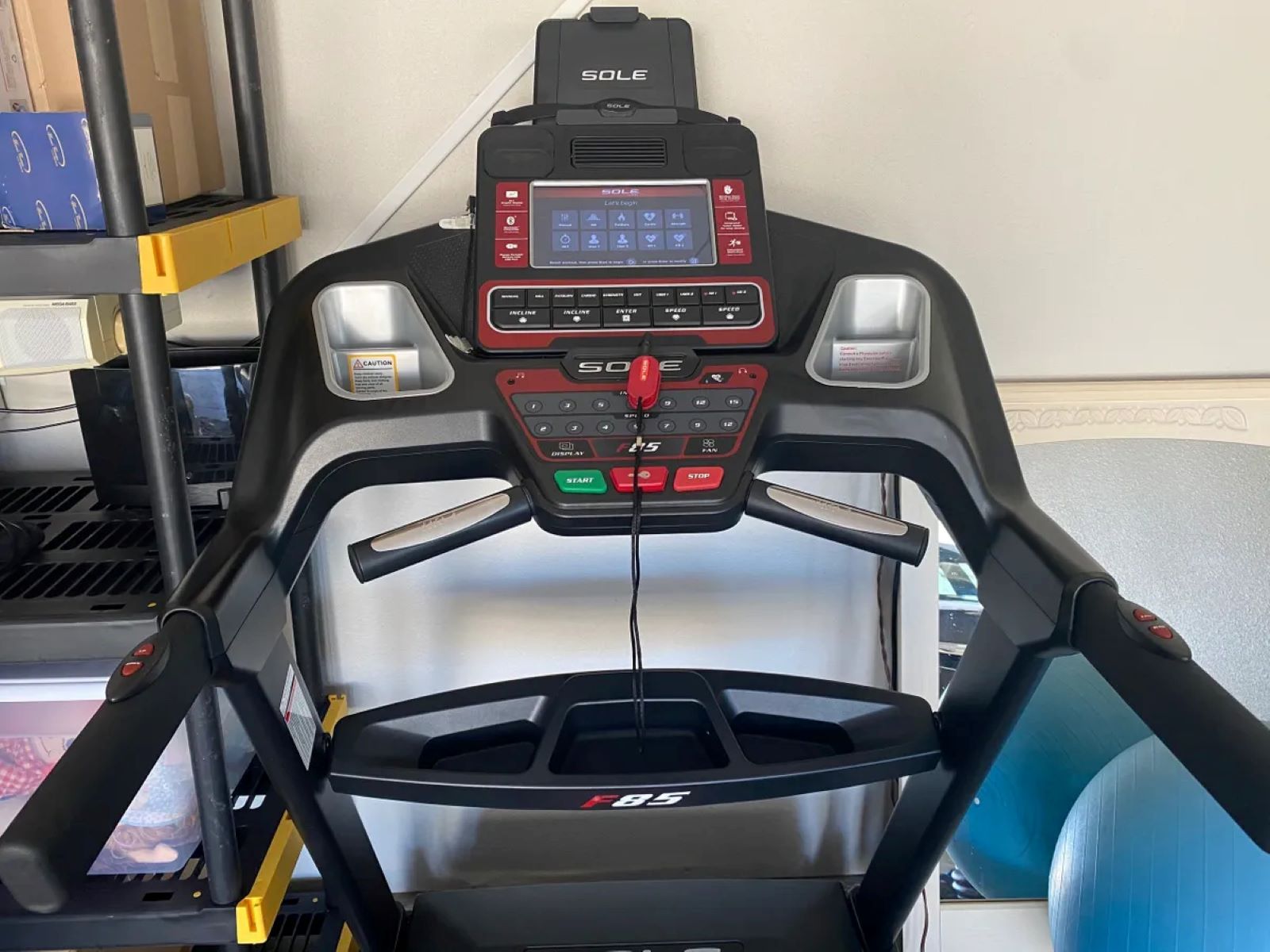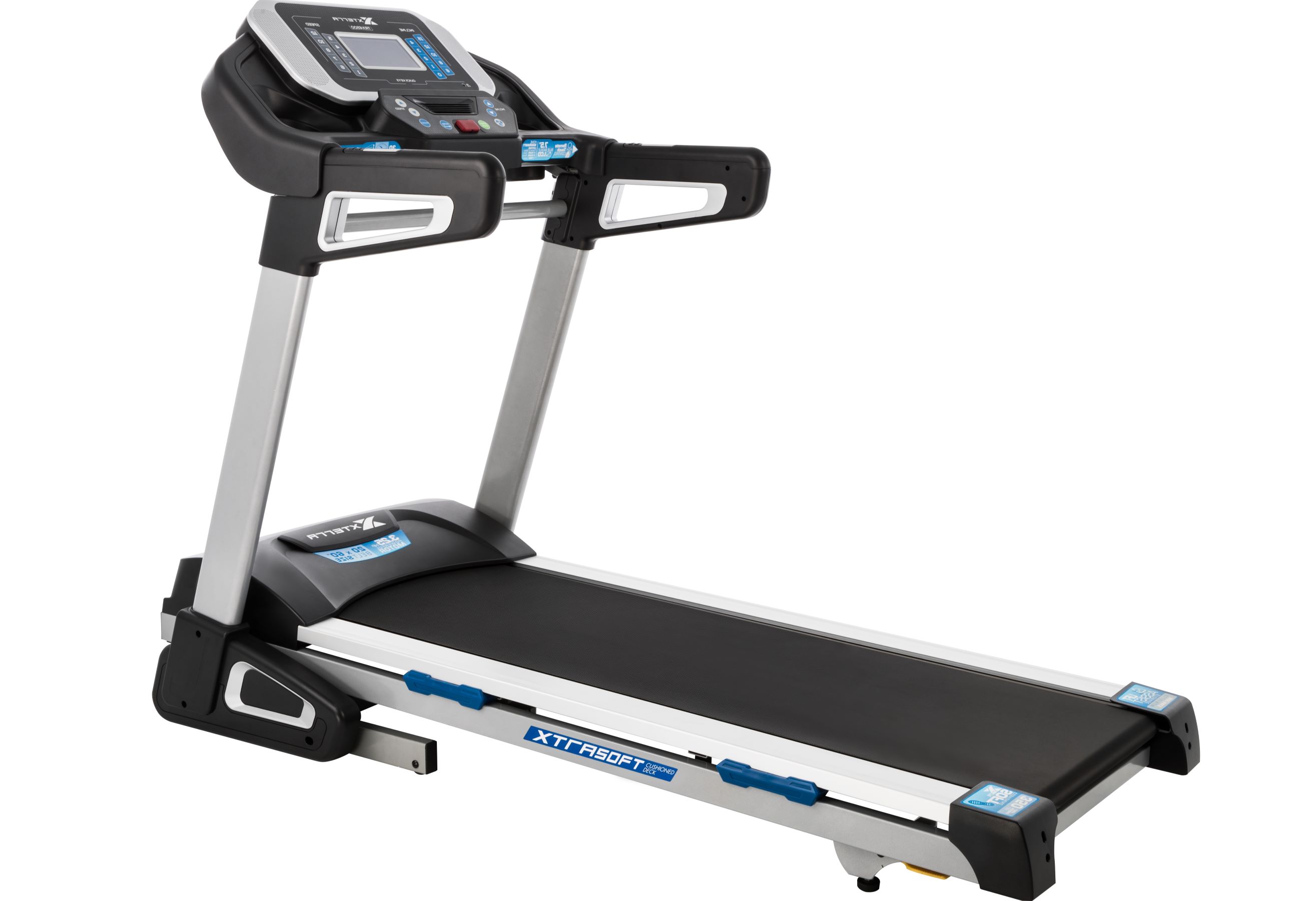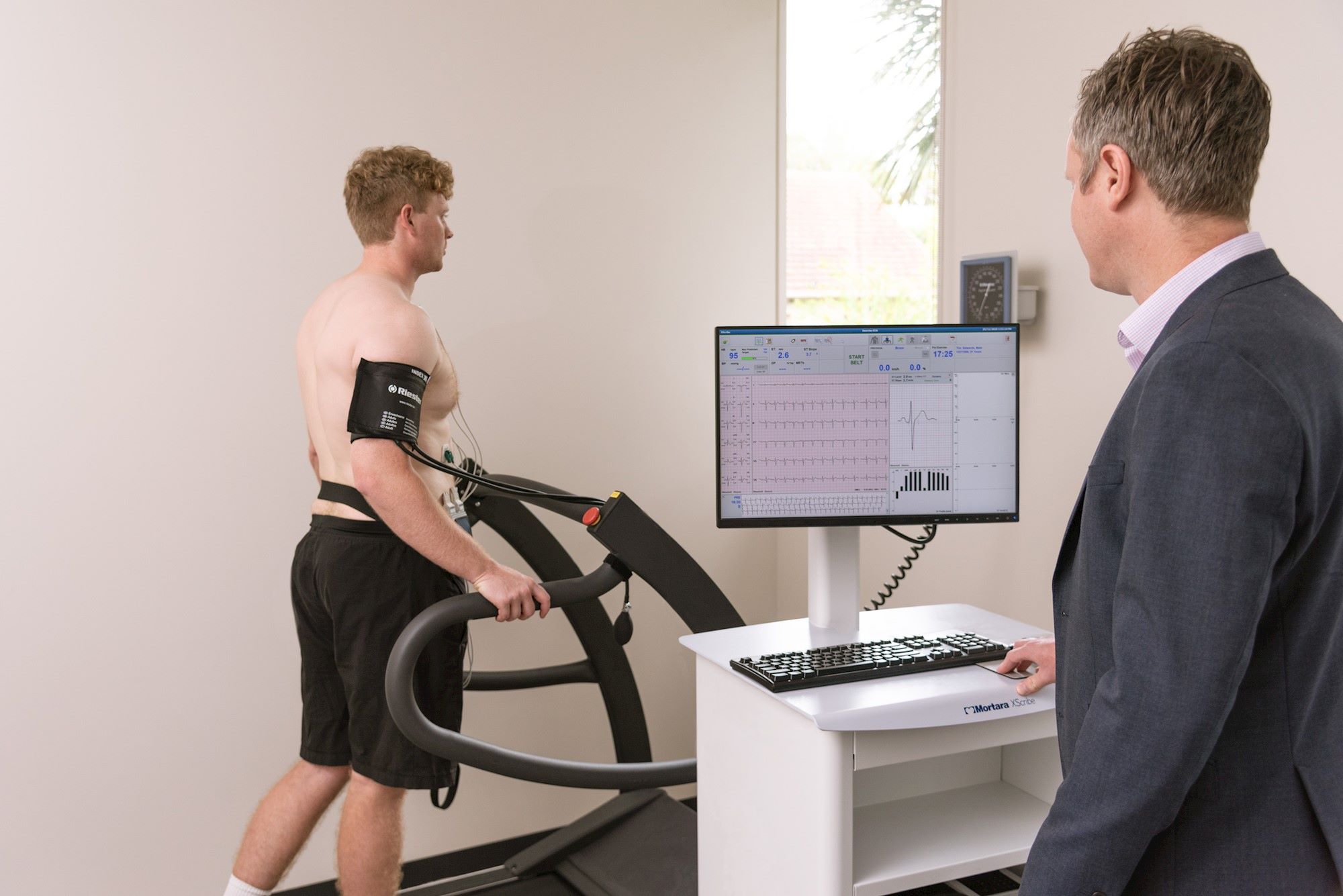

Featured
How Long Is A Treadmill Stress Test
Modified: January 2, 2024
Featured: Discover the duration and benefits of a treadmill stress test. Find out how long this test typically lasts and what it entails.
Introduction
A treadmill stress test is a diagnostic procedure that is used to evaluate the heart’s response to physical exertion. It is often performed to assess the overall cardiovascular health and to diagnose any underlying heart conditions. During the test, the patient exercises on a treadmill while being closely monitored by medical professionals.
The purpose of a treadmill stress test is to measure the heart’s ability to respond to increased activity and to identify any abnormalities in its function. This test can help doctors determine if there is reduced blood flow to the heart muscle, if there are any irregular heart rhythms, or if there are any signs of heart disease or other cardiovascular conditions.
Understanding the duration of a treadmill stress test is important for both patients and healthcare providers. It helps patients know what to expect during the procedure and allows providers to manage their schedules and resources accordingly.
In this article, we will explore how long a typical treadmill stress test lasts, as well as the factors that can influence its duration. We will also discuss the necessary preparations before undergoing a treadmill stress test.
So, if you’ve ever wondered about the duration and process of a treadmill stress test, read on to find out more.
What is a Treadmill Stress Test?
A treadmill stress test, also known as an exercise stress test or an exercise electrocardiogram (EKG), is a medical procedure that evaluates the heart’s response to physical activity. It is typically performed to assess the overall cardiovascular health and to diagnose any underlying heart conditions.
During a treadmill stress test, the patient exercises on a treadmill that gradually increases in speed and incline. Throughout the test, the patient’s heart rate, blood pressure, and electrocardiogram (ECG) readings are monitored to evaluate the heart’s performance under stress.
The test is usually administered by a healthcare professional, such as a cardiologist or a trained technician, in a controlled medical setting, such as a hospital or a clinic. It is done to assess the heart’s capacity to handle increased levels of physical exertion, mimicking how the heart responds during daily activities or exercise.
The treadmill stress test is non-invasive and relatively safe, although it does carry a slight risk of causing complications in certain cases, such as for individuals with underlying heart conditions or other health issues. Therefore, it is important for patients to disclose their complete medical history and any symptoms they may be experiencing before undergoing the test.
By monitoring the heart’s response to exercise, a treadmill stress test can provide valuable information about the cardiovascular system. It can help identify underlying heart conditions, such as coronary artery disease, valve disorders, or arrhythmias. It can also help determine the effectiveness of treatments or medications for heart conditions and guide healthcare providers in creating an appropriate exercise program for patients.
Overall, a treadmill stress test is a valuable diagnostic tool that allows healthcare professionals to assess a patient’s cardiovascular health and make informed decisions regarding their care.
How Does a Treadmill Stress Test Work?
A treadmill stress test works by evaluating how well the heart functions under increased physical activity. The test is designed to simulate the stress the heart may experience during daily activities or exercise.
During the test, the patient is connected to various monitoring devices, including electrocardiogram (ECG) electrodes, which record the heart’s electrical activity, and a blood pressure cuff to monitor blood pressure. These devices provide real-time data to healthcare professionals, allowing them to assess the heart’s response during the test.
The test typically starts with the patient walking on the treadmill at a slow pace; then, the speed and incline gradually increase, following a predefined protocol. The goal is to increase the heart rate and stress level on the cardiovascular system, simulating a moderate to intense level of exercise.
As the patient walks or runs on the treadmill, their vital signs, such as heart rate, blood pressure, and ECG readings, are closely monitored. The healthcare provider will periodically ask the patient about any symptoms they may be experiencing, such as chest pain, shortness of breath, dizziness, or fatigue.
If the patient experiences any concerning symptoms or if the test reveals abnormal electrical patterns in the ECG readings or blood pressure irregularities, the healthcare provider may choose to stop the test before reaching the target heart rate. This is done to ensure the safety and well-being of the patient.
Once the target heart rate has been achieved or if the patient can no longer continue due to fatigue or other factors, the test is stopped. The healthcare provider will carefully monitor the patient’s vital signs during the cool-down period to ensure a safe transition back to baseline levels.
After the test, the data collected, including ECG readings and any symptoms experienced, are analyzed by healthcare professionals. This information helps determine if there are any signs of reduced blood flow to the heart, abnormal heart rhythms, or other issues that may indicate a heart condition.
In some cases, additional imaging tests, such as a nuclear stress test or echocardiogram, may be conducted in conjunction with the treadmill stress test to provide further insights into the heart’s function.
In summary, a treadmill stress test works by evaluating how well the heart responds to physical exertion. By closely monitoring vital signs and analyzing the data collected during the test, healthcare professionals can assess the overall cardiovascular health and diagnose any underlying heart conditions.
Duration of a Treadmill Stress Test
The duration of a treadmill stress test can vary depending on several factors, including the patient’s age, physical condition, reason for the test, and the specific protocol used by the healthcare provider.
In general, a standard treadmill stress test lasts approximately 10 to 15 minutes. During this time, the patient gradually increases their level of exertion, walking or running on the treadmill while being closely monitored. However, it’s important to note that the duration of the actual exercise portion of the test may be shorter, typically around 5 to 10 minutes.
While the exercise portion of the test may only last a few minutes, additional time is required for the initial preparation and monitoring before and after the exercise. This includes attaching the necessary monitoring devices, discussing the test procedure with the patient, and allowing time for the patient to warm up and cool down before and after exercise.
In some cases, the healthcare provider may choose to extend the duration of the test to gather more comprehensive data or if the patient is able to continue exercising safely for a longer period of time. Alternatively, if the patient experiences symptoms or reaches the target heart rate before the expected duration, the test may be stopped early.
It’s important for patients to communicate with their healthcare provider throughout the test and inform them of any discomfort, fatigue, or other symptoms they may experience. This helps ensure the test stays within a safe and manageable duration for the patient.
In cases where the goal of the treadmill stress test is to evaluate the effectiveness of a medication or monitor the patient’s response to treatment, the duration may be shorter, typically around 5 to 10 minutes, as the focus is primarily on assessing the heart’s response to the specific medication or treatment.
Overall, while the exercise portion of a treadmill stress test is relatively brief, the overall duration, including preparation and monitoring, can range from 10 to 30 minutes or longer, depending on the individual circumstances and the specific protocol used.
It’s important for patients to follow their healthcare provider’s instructions and arrive well-prepared for the test to ensure accurate results and a smooth testing process.
Factors Affecting the Length of a Treadmill Stress Test
Several factors can influence the length of a treadmill stress test. Healthcare providers take these factors into account when designing the test protocol and determining the appropriate duration for each patient. Some of the key factors affecting the length of a treadmill stress test include:
- Age and Physical Condition: Younger individuals who are in good physical condition may be able to perform the test for a longer duration compared to older individuals or those with underlying health conditions. Age and physical condition play a significant role in determining the stress level placed on the cardiovascular system and the overall duration of the test.
- Reason for the Test: The purpose of the treadmill stress test can also influence its duration. If the test is being used to diagnose specific heart conditions or evaluate the effectiveness of certain treatments, the healthcare provider may modify the protocol and extend the length of the test to gather more comprehensive data.
- Target Heart Rate: The target heart rate, which is based on factors such as age, gender, and overall health, can impact the duration of the test. If the patient achieves the target heart rate within a shorter time frame, the test may be stopped early.
- Symptoms and Response: The presence of symptoms such as chest pain, shortness of breath, dizziness, or fatigue during the test may prompt the healthcare provider to modify the duration. If symptoms become concerning or are experienced early in the test, it may be stopped to ensure the patient’s safety.
- Medication and Health History: Some medications or underlying health conditions may affect the length of the test. Certain medications may interfere with heart rate response or affect the accuracy of the results, leading to adjustments in the duration of the test. The patient’s overall health history and any potential risks associated with exercise will also be considered.
It’s essential for healthcare providers to assess these factors and tailor the duration of the treadmill stress test to each individual patient’s needs. This ensures the test is safe, accurate, and provides valuable information about the patient’s cardiovascular health.
Patients should communicate openly with their healthcare providers about any symptoms, concerns, or limitations they may have to ensure that the duration of the test is appropriate and aligns with their specific circumstances.
Preparation for a Treadmill Stress Test
Proper preparation is crucial to ensure accurate results and a smooth experience during a treadmill stress test. Here are some important steps to follow in preparation for the test:
- Discuss Medications: Patients should inform their healthcare provider about any medications they are currently taking. Some medications can affect heart rate and blood pressure, which may impact the results of the test. The healthcare provider may advise patients to temporarily discontinue certain medications before the test.
- Avoid Stimulants: Patients should avoid consuming stimulants such as caffeine, nicotine, and certain over-the-counter medications before the test. These substances can affect heart rate and blood pressure, potentially influencing the accuracy of the test results.
- Wear Comfortable Clothing and Shoes: It is recommended to wear loose-fitting, comfortable clothing and appropriate athletic shoes for the test. This allows for freedom of movement and ensures comfort during exercise.
- Follow Fasting Instructions: In some cases, patients may be instructed to fast for a certain period before the test. This may be necessary if additional imaging tests, such as a nuclear stress test, will be conducted simultaneously. Patients should follow any fasting instructions provided by their healthcare provider.
- Avoid Strenuous Exercise: Patients should avoid engaging in strenuous exercise on the day of the test or the day before. Vigorous physical activity can affect the results of the test and may cause fatigue or discomfort during the procedure.
- Inform the Healthcare Provider: It is important to inform the healthcare provider about any symptoms or changes in health status leading up to the test. This includes reporting any chest pain, shortness of breath, dizziness, or other concerning symptoms.
- Arrive on Time: Patients should arrive at the designated testing facility on time and be prepared to dedicate the necessary time for the test. This allows for adequate preparation, including attaching monitoring devices, discussing the test procedure, and ensuring patient comfort before starting the exercise portion of the test.
Following these preparation steps helps ensure that the treadmill stress test proceeds smoothly and provides accurate results. It is vital for patients to communicate openly with their healthcare provider, ask any questions they may have, and follow any specific instructions provided to them.
Conclusion
A treadmill stress test is a valuable diagnostic tool used to assess the heart’s response to physical activity and evaluate cardiovascular health. The test involves walking or running on a treadmill while being closely monitored for changes in heart rate, blood pressure, and ECG readings. Understanding the length and process of a treadmill stress test is important for patients undergoing the procedure.
During a typical treadmill stress test, the exercise portion lasts approximately 5 to 10 minutes, while the overall duration, including preparation and monitoring, can range from 10 to 30 minutes or longer. Factors such as age, physical condition, reason for the test, target heart rate, symptoms, and medication history can influence the length of the test.
Proper preparation is crucial before undergoing a treadmill stress test. Patients should discuss their medication regimen with their healthcare provider, avoid stimulants, wear comfortable clothing and shoes, follow any fasting instructions, and inform the healthcare provider of any symptoms or changes in health status.
By following these guidelines and communicating openly with healthcare providers, patients can ensure a smooth and accurate treadmill stress test experience. The results of the test can provide valuable information about cardiovascular health, aid in the diagnosis of heart conditions, and help guide appropriate treatment plans and exercise recommendations.
So, if you’re scheduled for a treadmill stress test or simply curious about the procedure, you can now approach it with a better understanding of its duration, process, and significance in assessing your heart health.


